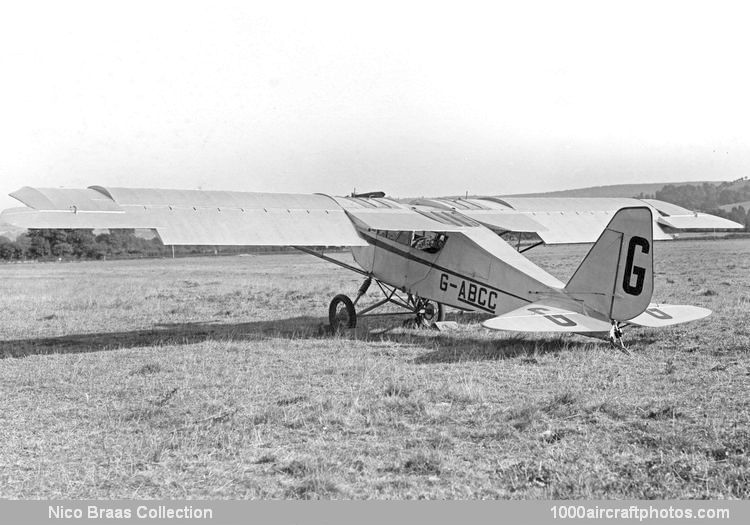03/15/2017. Remarks by Johan Visschedijk: "In May 1929 Gloster Aircraft received a most unusual contract to build a unique form of aircraft wing. The project, which was financed by some Italian residents in London, involved the construction of a special variable-camber wing and its fitment to a Breda 15 two-seat high-wing monoplane powered by a 100 hp de Havilland Gipsy 1 engine.
The wing's designer was Ugo Antoni, an Italian aircraft engineer and keen ornithologist who, in seeking to obtain high lift plus the advantages of controlled gliding flight, turned to birds' wings for inspiration. The trailing edge of the Breda's wing was built in three sections; normal ailerons at the tips with a variable-camber section inboard of them and cable-operated from a handwheel in the cockpit. In this section every fourth rib was 'operated' and the three in between were of light construction and flexed to follow the curvature of the main ribs. The third section at the root end was of light metal and multi-ply wooden construction which was free to move up and down through a limited travel similar to the feathers on a bird's wing.
The last of a batch of six sold in Great Britain, the Breda 15 was registered G-ABCC on June 26, 1933, co-owners were Gloster Aircraft Co. Ltd. and Ugo Antoni Safety Aircraft Ltd. Work was completed by the end of August 1933 and the first flight was on September 8, 1933. The Italian pilot reported that with the wing at full camber he could hover when the wind speed exceeded the aircraft's minimum speed. Rex Stocken, a Gloster pilot, took over the Breda, which had now been fitted with a larger rudder, for a 10 hr flight test program and flew it for the first time on November 14. He found the lateral stability was affected by the unusual wing design and control response was different from a conventional aircraft: nevertheless the program was completed satisfactorily.
On December 1, 1933, the whole project came to an untimely end when flown by Howard J. Saint, Gloster's Chief Test Pilot, the Breda encountered heavy turbulence which induced excessive wing flutter and part of the port aileron broke away. The aircraft crashed into trees on Churchdown Hill near the factory at Brockworth Aerodrome and was a complete write-off. Saint was unhurt and reported that the root end stabilizer sections of the wing prevented a change of attitude which could have stopped the flutter."
